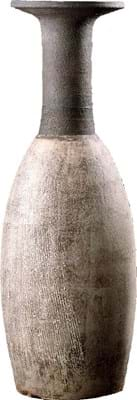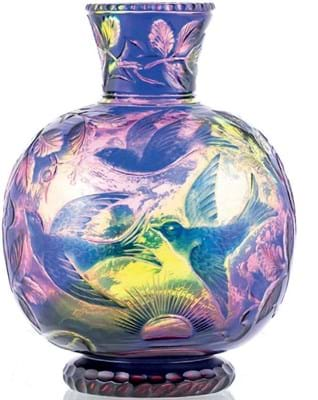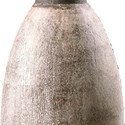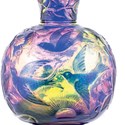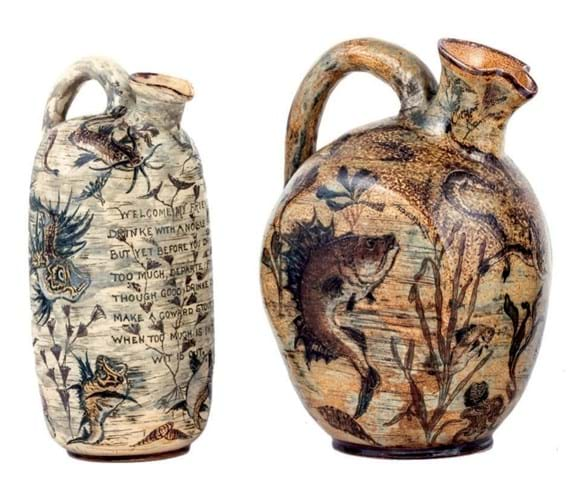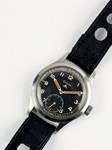In this case, the fortunate vendor was a woman who, about 30 years ago, paid £20 at a car boot sale for a 19in (49cm) tall stoneware vase suitable for tall flower arrangements.
The happy auction house whom she asked if the vase, stamped Hans Coper, was of value, was Gildings (15% buyer’s premium) of Market Harborough.
Director Will Gilding, who spent seven years as a 20th century decorative art specialist at Bonhams, said: “I had great pleasure in confirming that it was a genuine work from about 1955 and she decided to sell it at our 20th century decorative arts sale on May 22.”
Astonishing prices
Coper has brought some astonishing prices of late, often out-selling his one-time mentor Lucie Rie. The £305,000 (plus 21% premium) achieved for one of his Cycladic series vase at Bearnes Hampton & Littlewood of Exeter in February (ATG No 2332) appears to be a statistical outlier, but five-figure bids are quite common.
“This vase is unusual for Coper’s work by way of the scale and thickness of the rim, but nevertheless it bears many of his trademarks in the subtle textures and glazes,” said Gilding. He put an estimate of £5000-8000 on it, tempting buyers and delighting the vendor who was having a clear-out of her house after her retirement.
“The vase was on the floor for years with children playing around it and the vacuum cleaner bumping against it every week,” said Gilding.
It had survived in good condition and triggered phone and online bidding before selling at £18,000.
The vase was the top-seller of the 240-lot, £92,000 sale but, for Gilding, an equally important piece to emerge from obscurity was a Stevens & Williams glass vase.
The Stourbridge firm had a history back to the 1770s but is best known for the cameo glass it began to produce in the 1880s.
The 7½in (18cm) tall vase was a c.1917 example of the scarce ‘Rainbow-cased’ line and, to add to its rarity, it was engraved to the foot J. Hodgetts. Joshua Hodgetts (1853- 1933) is regarded as among the finest intaglio engravers of the early 20th century. There may have been others offered at auction,” said Gilding, “but I could only find one previous example of a Rainbow-cased vase of a similar nature. It went unsold at Sotheby’s Olympia rooms in 2003 where it was estimated at £8000.”
The Market Harborough vase was pitched at £2000-4000 and sold to a UK collector at £7500.
Hock glasses
The display cabinet (the article which the Northampton vendors had originally asked to be valued) from which the vase came, also housed two S&W 7½in (19cm) tall, c.1910 intaglio-carved hock glasses.
One with a bowl triple-cased in amber, pink and blue and engraved with fruiting vines, the other in amber glass engraved with scrolling panels, they were offered as one lot and sold at £950, six times the top estimate.
On a more downbeat note, the sale included a reminder that top names do not guarantee top money.
Three stoneware pieces, an 8¾in (22cm) tall, 1889 vase and two 9¾in (25cm) drinking vessels dated 1887-88, all decorated with grotesque fish and aquatic creatures and incised Martin Brothers London Southall came from the same collection.
While Martinware grotesque bird jars can easily make five figures, other vessels such as these are in less demand and the three proved poor investments against the prices they took at Bonhams Knightsbridge in April 2014.
The vase modelled in relief, which fetched a premium-inclusive £3750 four years ago, failed against a £3000-5000 estimate. The similarly estimated incised flagon (£2500 at Bonhams) took £2900 and the flask made a lower-estimate £3000 (£3250 in 2014).


